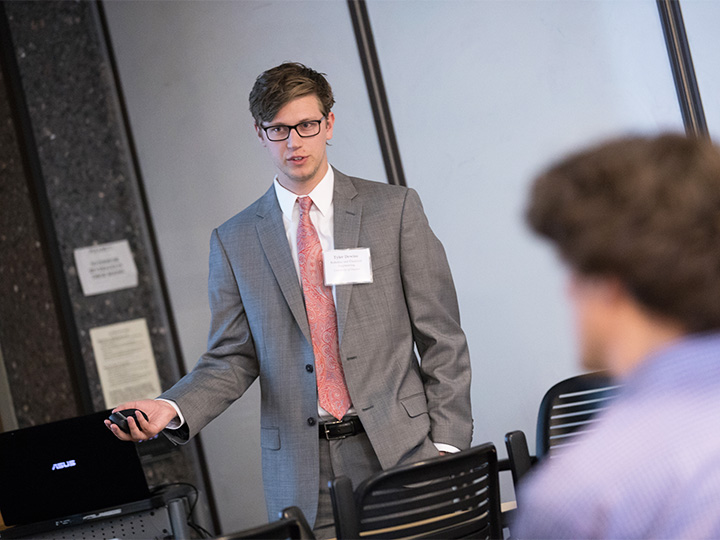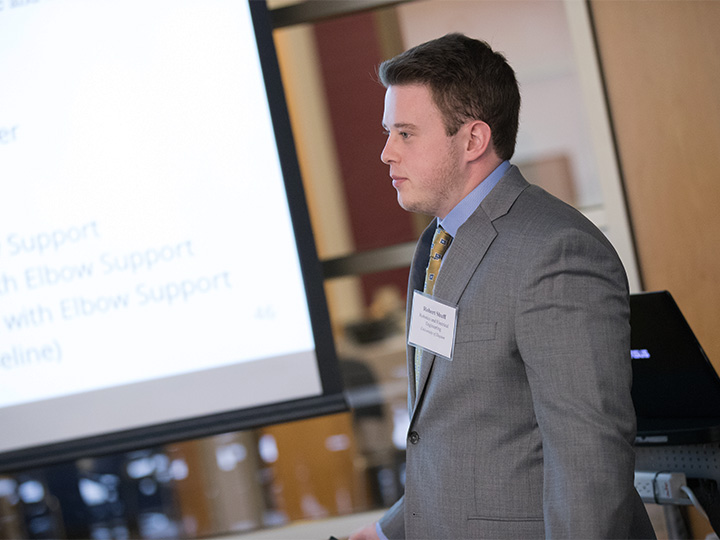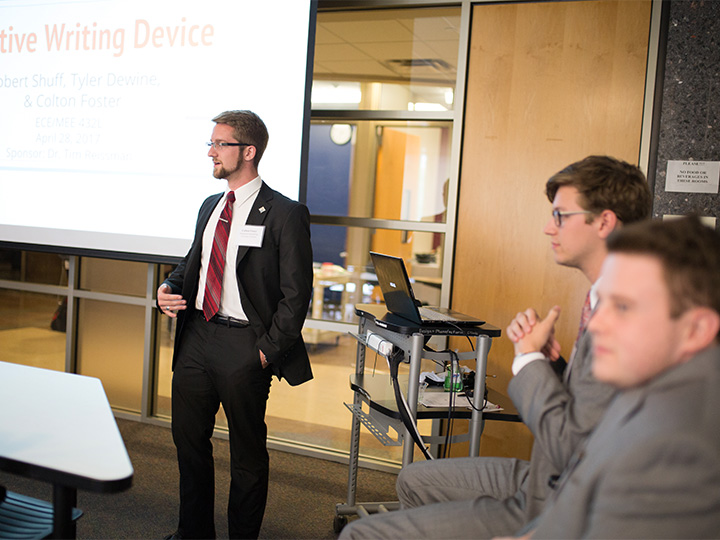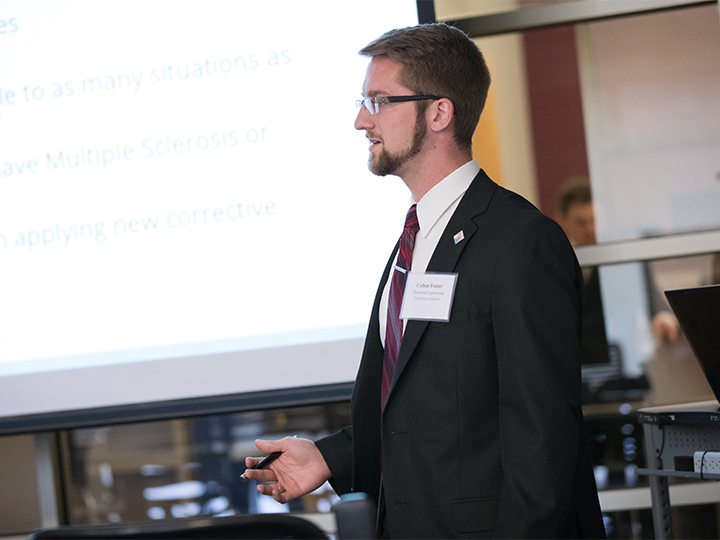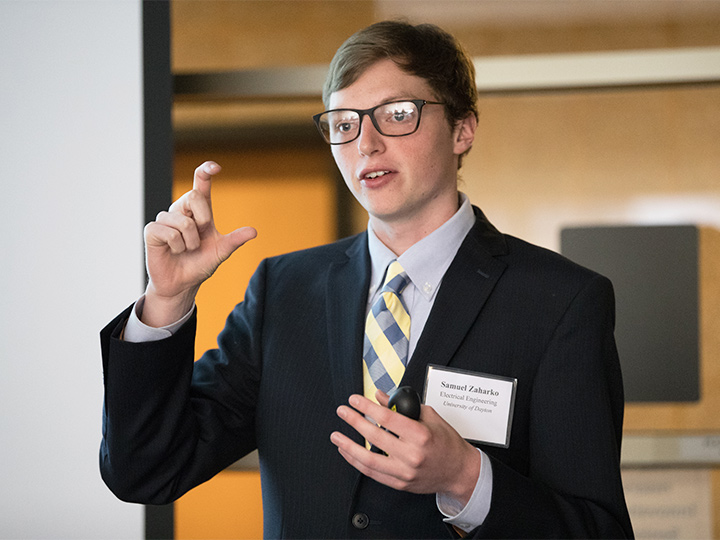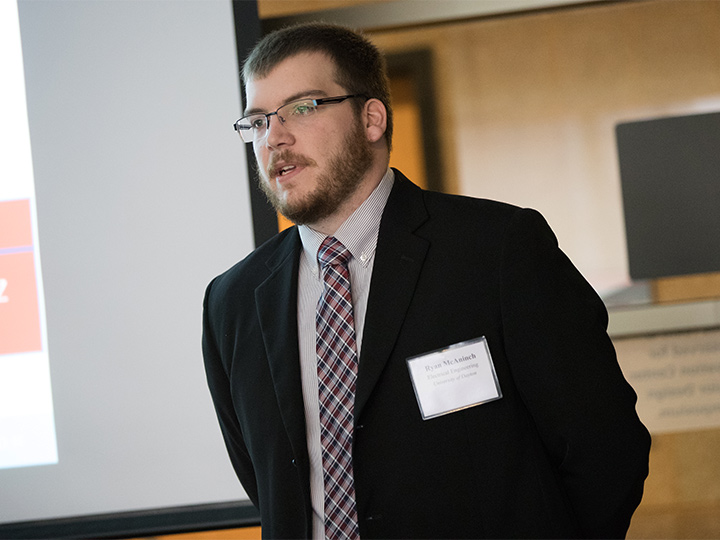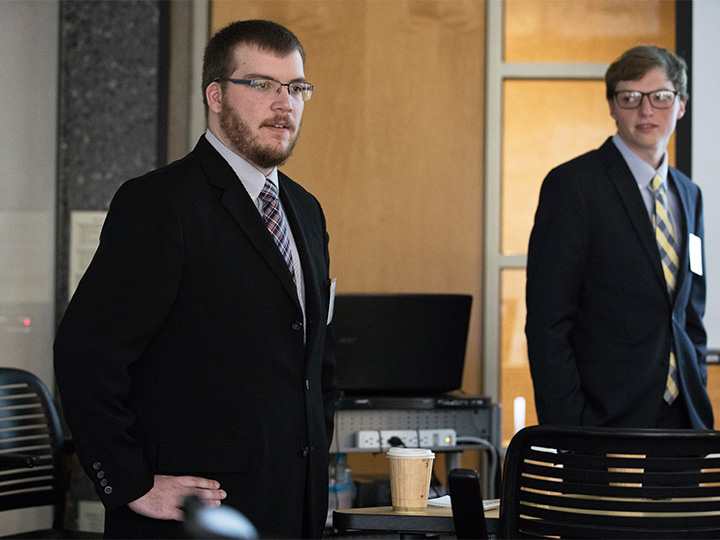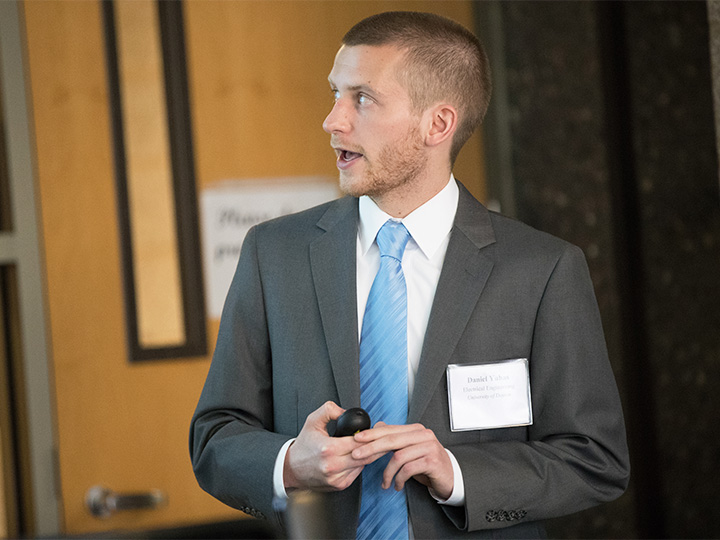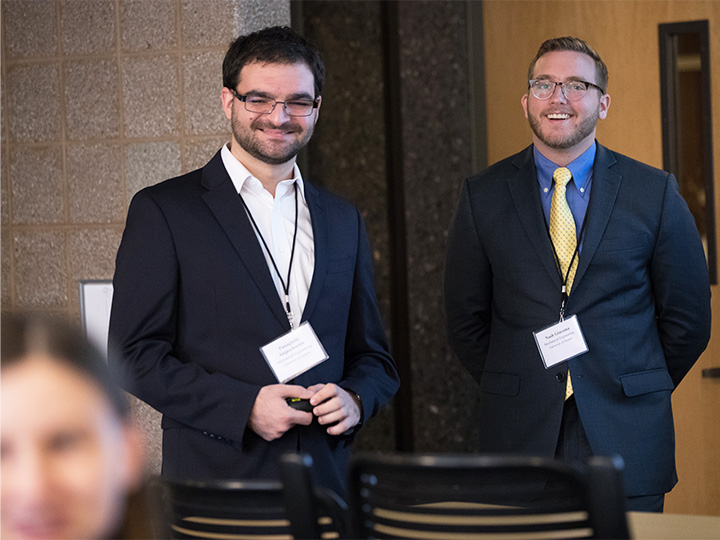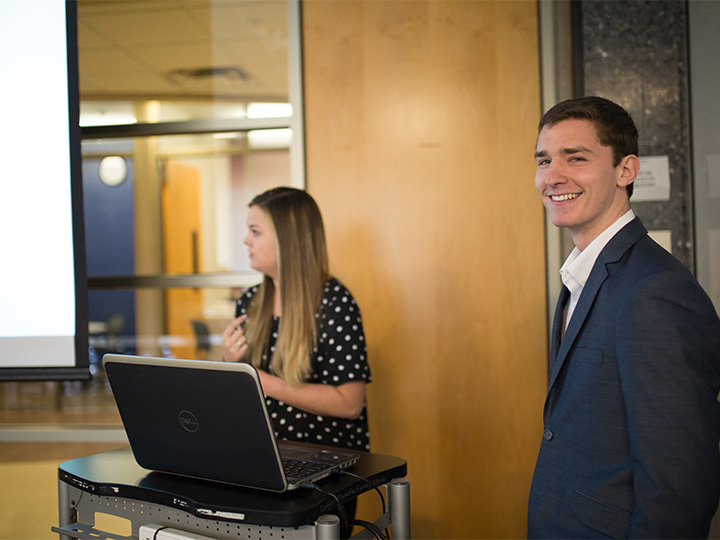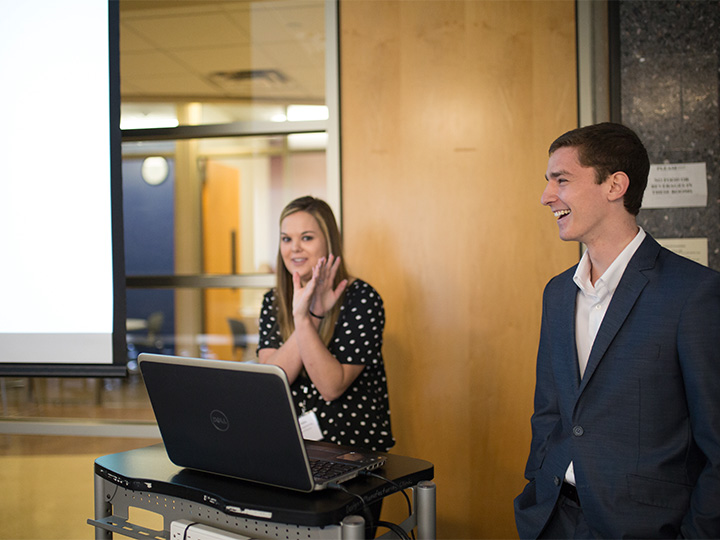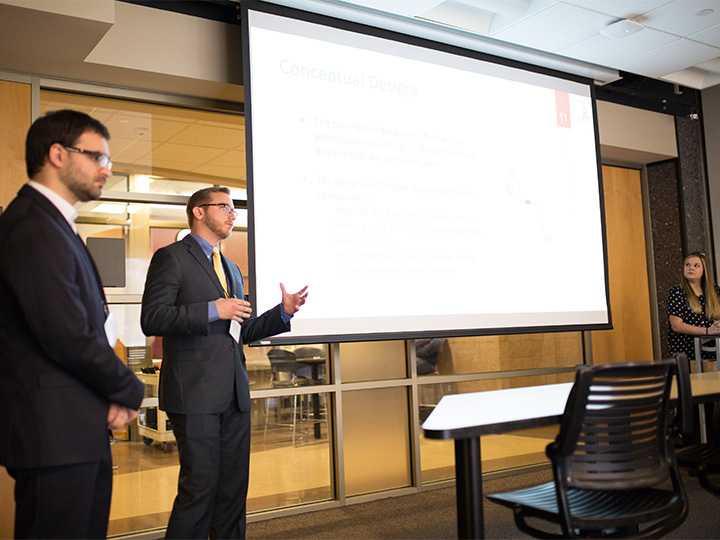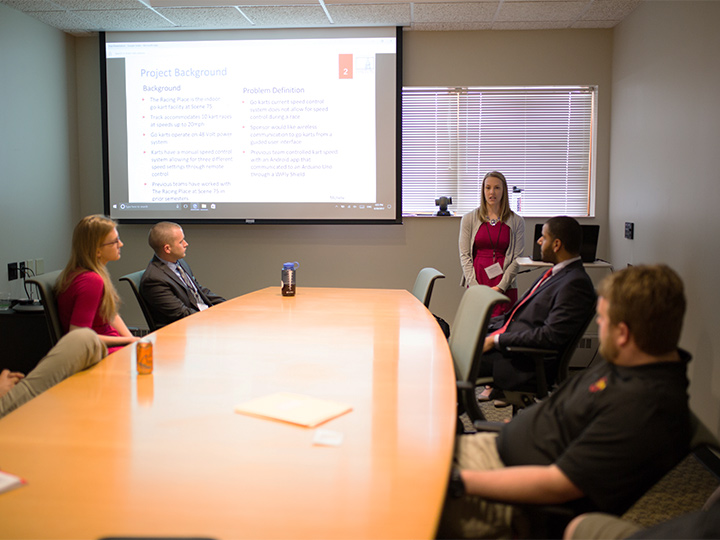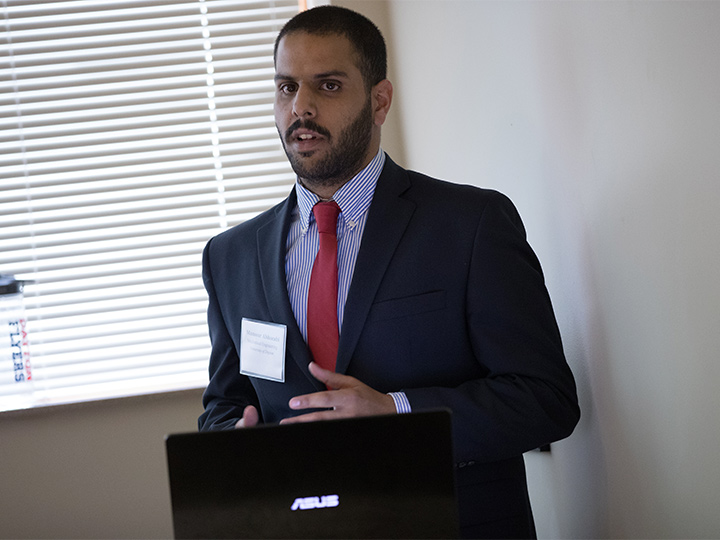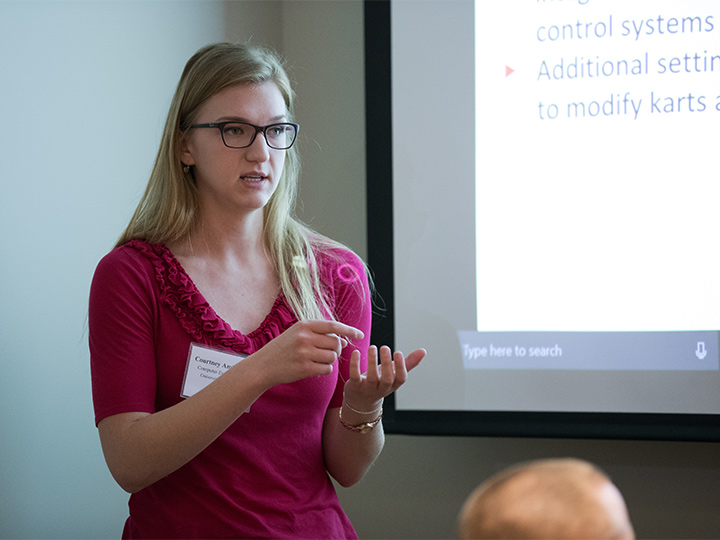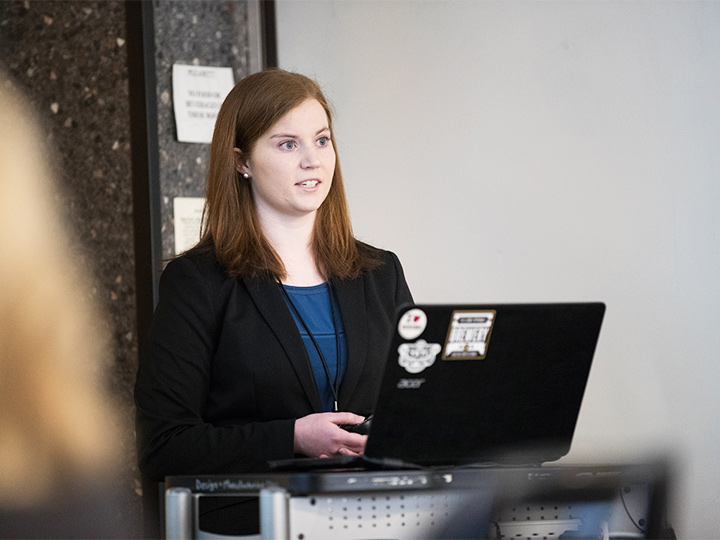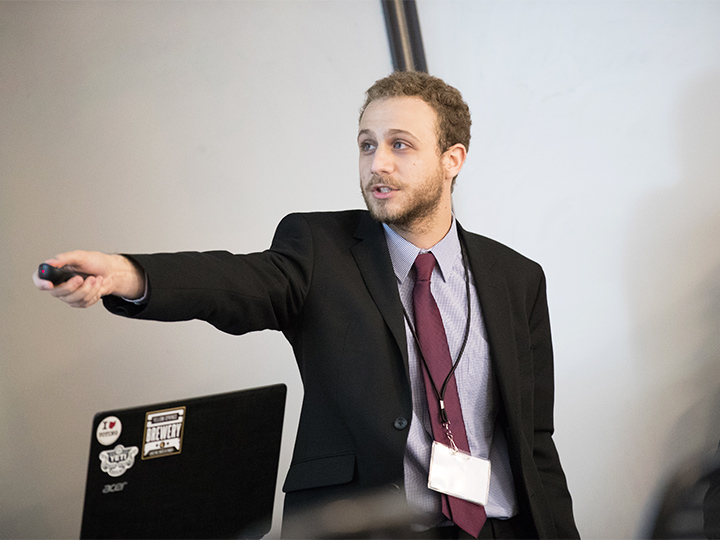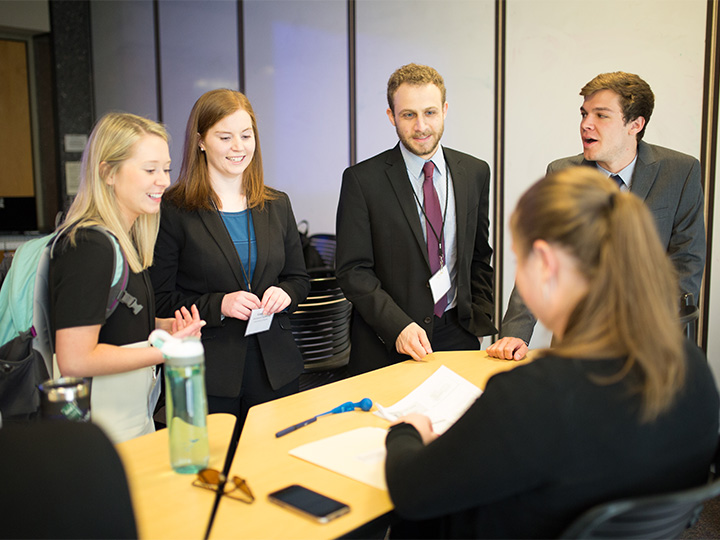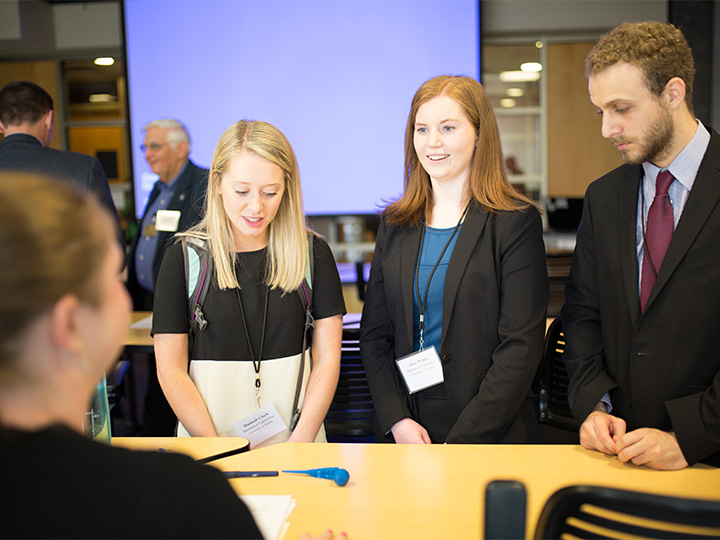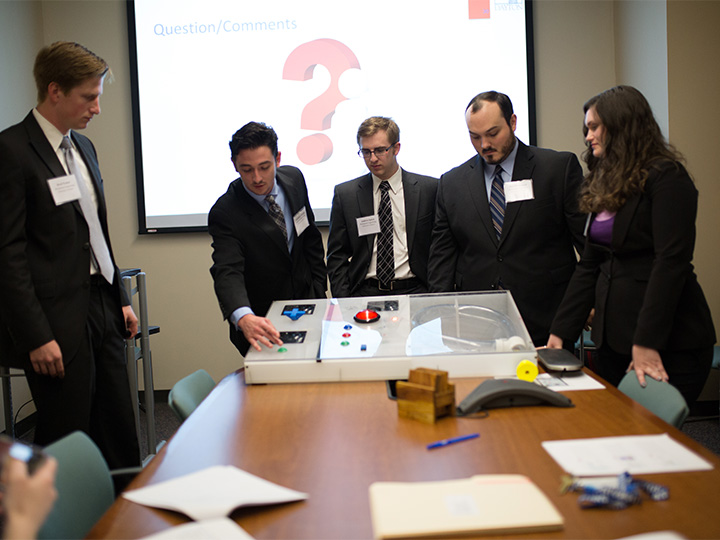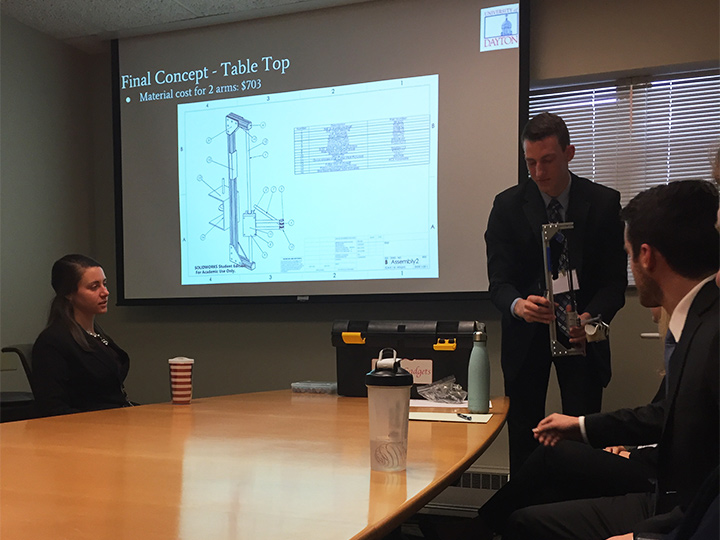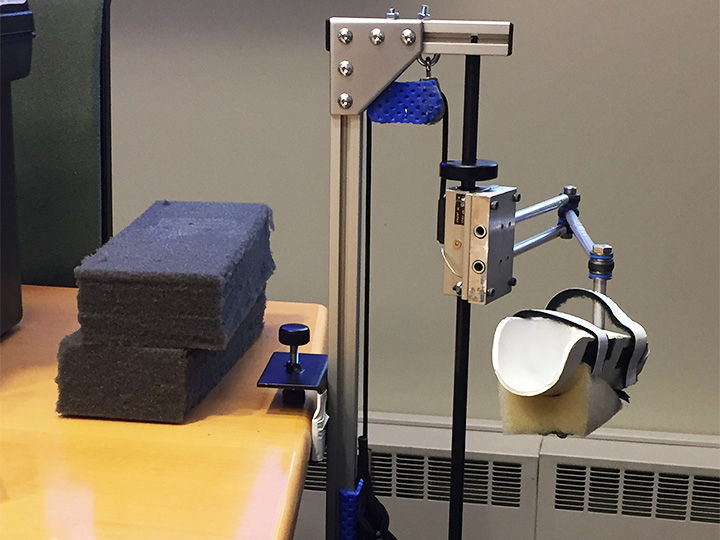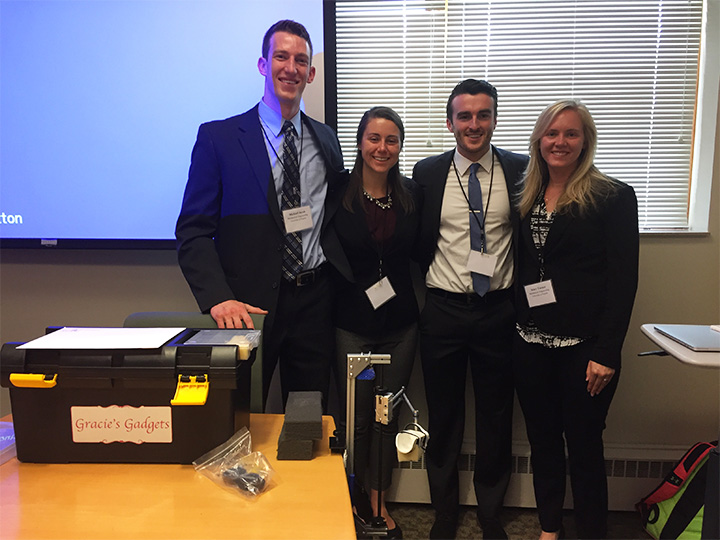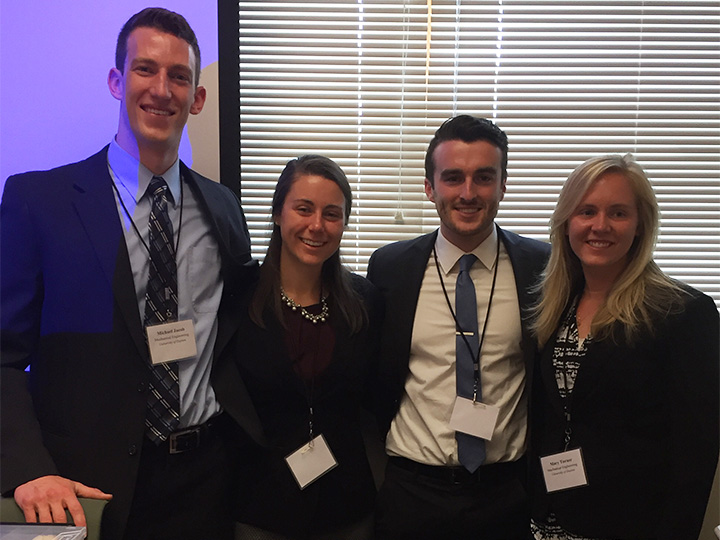Dayton Engineer
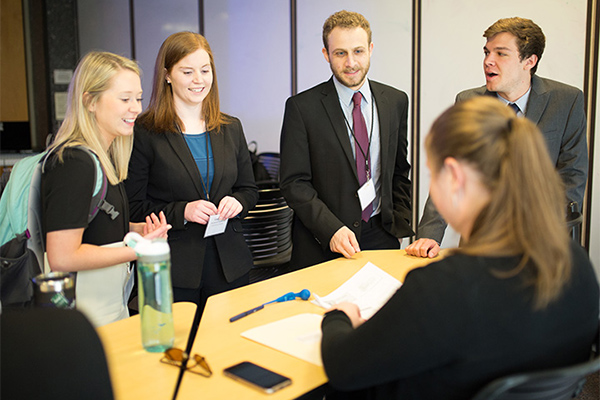
Training Leaders and Critical Thinkers
By Karen Updyke, School of Engineering
While many of the corporate projects are proprietary, each semester a number of community-based projects are brought forward, some being advanced over several semesters. The 68 projects presented at the spring 2017 Symposium included a safety system for the School’s Maker Space, a mobile arm support for a young child and a project to make Flyers games more enjoyable for a fan with hearing loss.
Maker Space Lock Out Tag System
This year, the School of Engineering sponsored a project to secure the School’s Maker Space lab, its machines and its safety.
The student presentation included a demonstration in the Maker Space, where onlookers witnessed a demonstration of the proposed solution.
Engineering students Ningwei Chu, Thomas Kendo, Mitchell Turk, Jack Watkin and Mark Weber, were on the multidisciplinary team of mechanical, electrical and computer students who developed a system where students accessing the Makers Space use an identification card; stand-alone WiFi enables oversight.
“The students did an amazing job putting all of the pieces together—reliability, testing and lighting,” said Dean Eddy Rojas.
Becky Blust, the Innovation Center director, explained, “This team took the project a long way; even though there are known anomalies, the project will be complete soon.”
URS Mobile Arm Support for Gracie
Another successful team project — a child’s mobile arm support — was designed to help a child increase her arm range-of-motion. The project was supported by a National Science Foundation (NSF) grant and the United Rehabilitation Services of Greater Dayton (URS).
Four-year-old Gracie has a condition called arthrogryposis, which limits the strength in her arms and legs. She began to think that her arms were useless.
“Through this project, we hoped that we could change Gracie’s mind,” said mechanical engineering student Michael Jacob.
Jacob, Adam Nields, Erin Peiffer and Mary Turner developed two mobile arm supports that clamp to tables or chairs to help Gracie rehabilitate safely.
Their compact and safe design “doesn’t need a power source and costs a fraction of the maximum amount of money allocated,” said Jacob.
Char — Audio Support
“We’re 95 percent there,” said electrical engineering student, Daniel Yuhas.
For their project, engineering students Ryan McAninch, Samuel Zaharko and Yuhas, advanced an audio-support device that reduces the broadcast radio delay at sporting events. For those with hearing impairments, the delay between the live action and the broadcast explanation can be frustrating. The team came up with a device that includes: a proprietary signal for communication, a five-year battery and works within FCC regulations.
“After market and financial analyses by University business students, we decided that radio frequency spectrums would be our best option,” explained Yuhas. The next team should optimize and include someone with circuits’ familiarity as well as students from law, business and engineering for process and device patents.”
At the end of the presentation, sponsor David Char congratulated the team, “We appreciate your hard work and effort . . . you got us there.”
The Innovation Center hosts the two-day Capstone Design Symposium twice a year at the end of the fall and spring semesters. The 2017 Symposium featured 68 projects.

